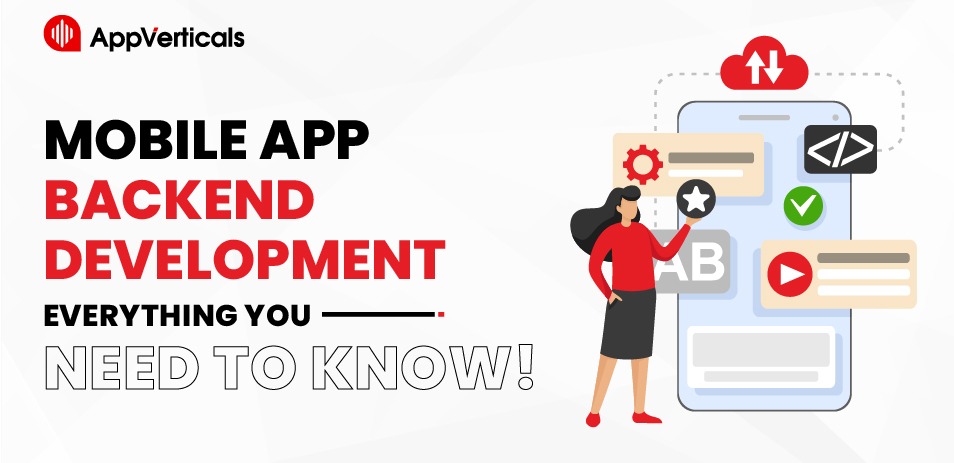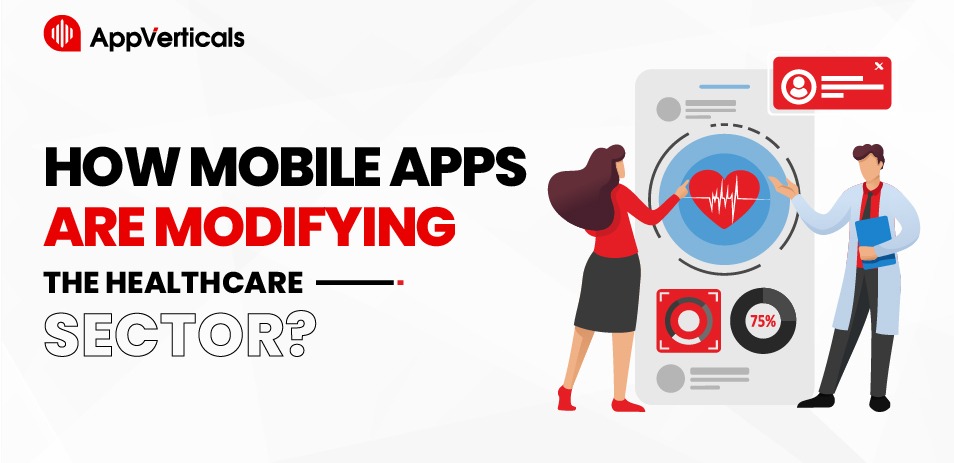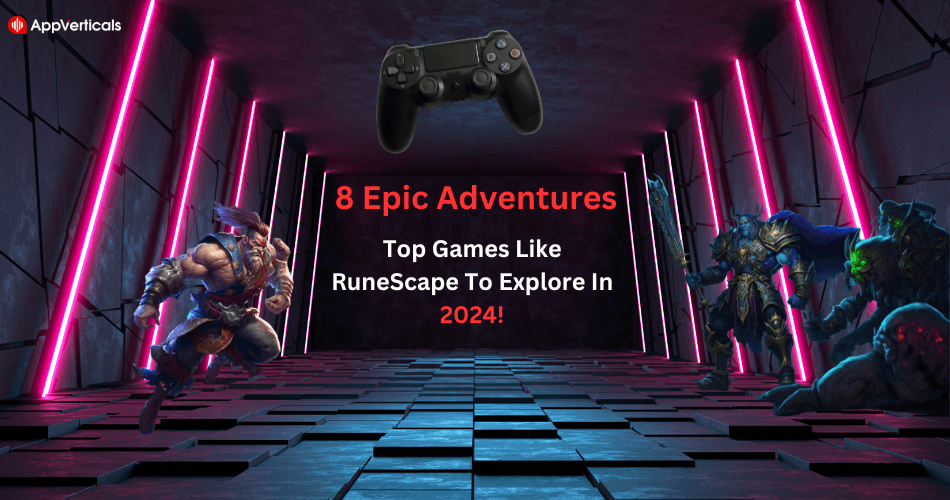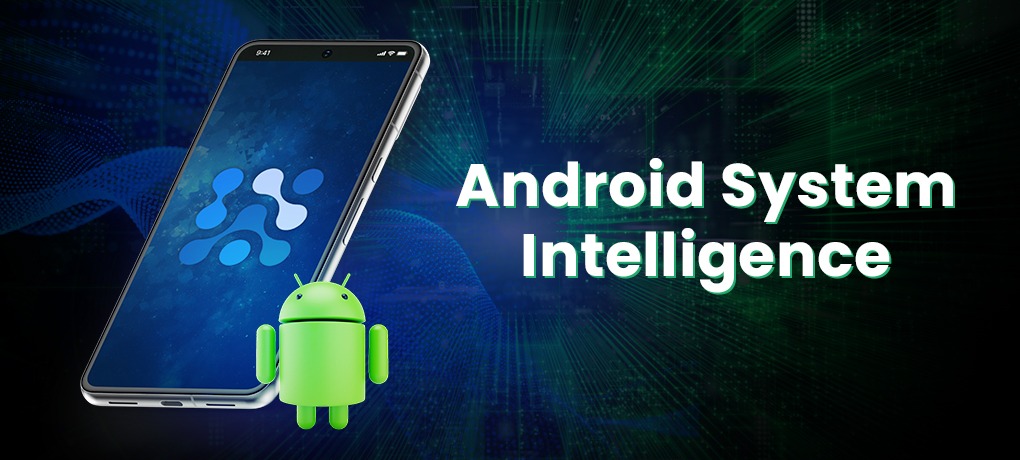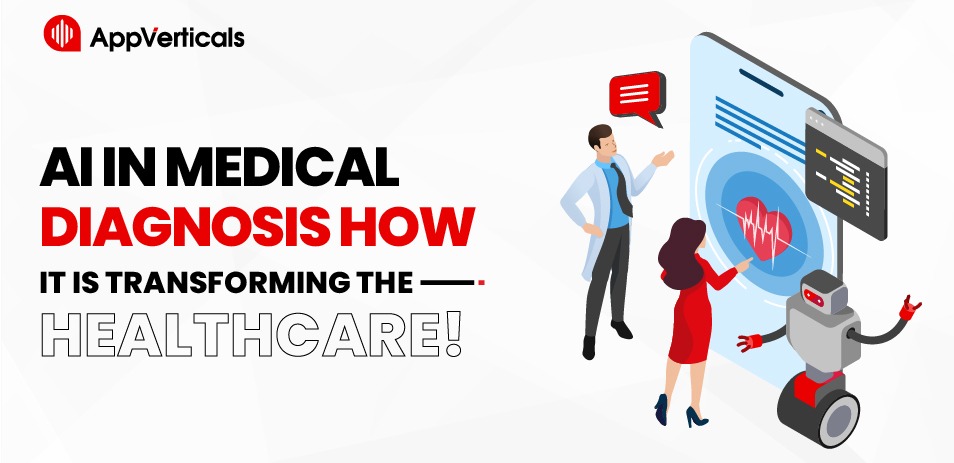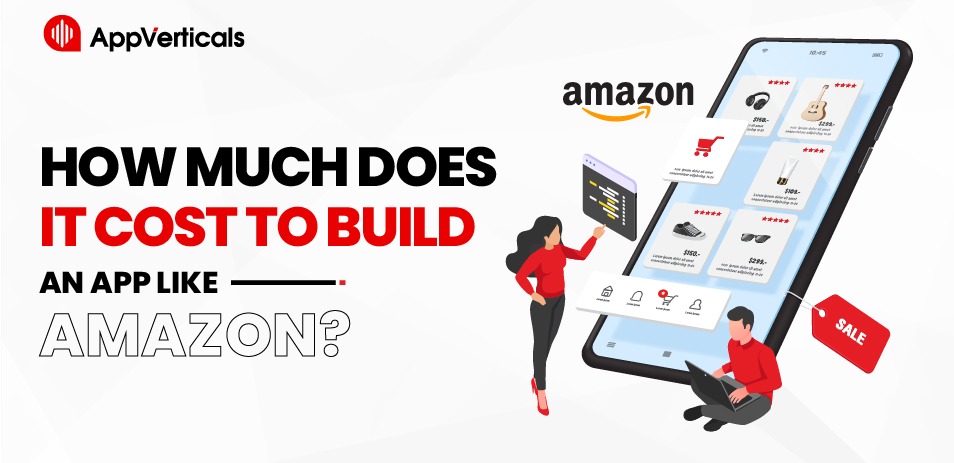For any app to work well, it needs a strong mobile app backend development. The backend handles important tasks like storing data, managing user logins, and connecting the app to a server.
The mobile app’s backend architecture includes the server, database, and APIs, which help the app do its job. For business owners, product managers, and aspiring developers, it’s key to know that while the frontend is what users interact with, the backend powers everything behind the scenes.
Studies show that this profession is expected to rise by 13% by 2028 as mobile devices and the e-commerce business become more prominent.
So if you’re part of an app development company or planning a project, understanding how to build a backend for a mobile app is essential.
What Does a Backend Server Do?
A backend server for mobile apps is what powers all the tasks behind the scenes. It handles user requests, stores data, and processes information. For example, when users log in, make a purchase, or send a message, the backend server takes care of it. Without a good backend, even the most visually appealing app won’t function smoothly.
Speed and Reliability Matter
If the backend server is slow, the app will lag. More than 50% of users will uninstall an app if it takes too long to load. For businesses, this means losing customers and potential sales. A fast, reliable backend is crucial to keeping users happy.
| Key Feature | Importance |
| Speed | Users expect fast responses. |
| Data Storage | Must scale with growing app usage. |
| Reliability | Ensures app performance doesn’t drop. |
Managing Data and Growth
As an app grows, so does the amount of data it stores. An eCommerce app, for example, may start with a few hundred users but grow to thousands. The backend must be able to handle this increase. Choosing the right mobile app backend architecture ensures the app stays fast, secure, and scalable.
Understanding Mobile App Backend Architecture
Understanding mobile app backend architecture is essential for building successful apps. This architecture includes several key components that work together to ensure everything runs smoothly.
Key Components:
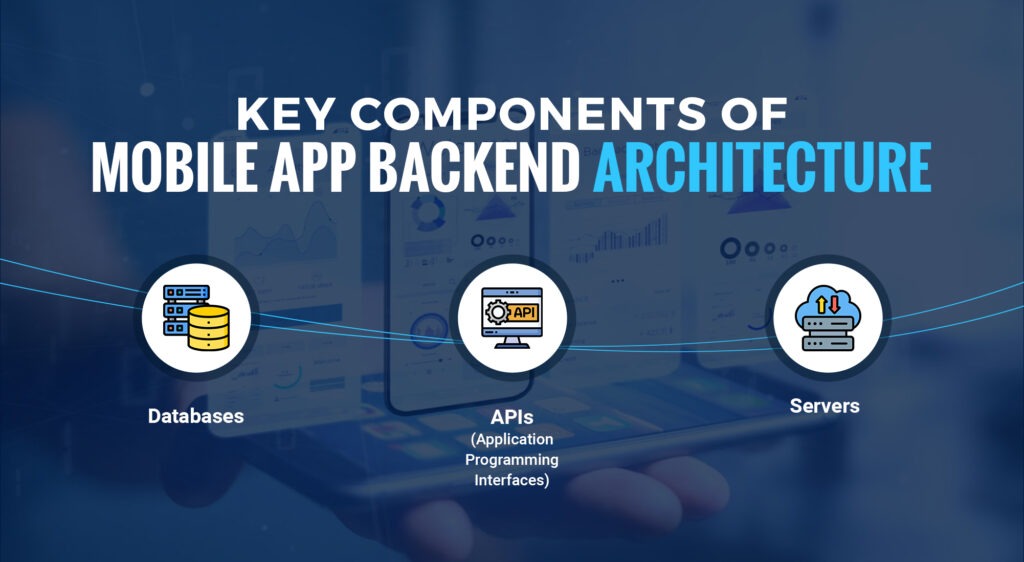
1. Databases:
Databases store all the app’s data, such as user information and app settings. There are two main types of databases:
- SQL Databases: These use structured query language for data management.
- NoSQL Databases: These are more flexible and can handle unstructured data.
A well-structured database helps retrieve information quickly, improving user satisfaction.
2. APIs (Application Programming Interfaces):
APIs act as the middleman between the frontend (what users see) and the backend (what happens behind the scenes). They allow the app to send requests for data and receive responses.
When a user adds an item to their cart, the app uses an API to inform the backend server.
3. Servers:
The backend server for mobile apps handles user requests and manages data flow. It responds to API calls and interacts with the database. Choosing the best backend for mobile apps often involves cloud services, which provide the necessary scalability and reliability.
Amazon Web Services (AWS) and Microsoft Azure are popular choices among developers.
Crafting Your Ideal Mobile App/Experience Starts Here!
Ready to elevate your business? Your custom app is just a click away.
Yes Let’s goCommon Architectures: Monolithic vs. Microservices
When it comes to mobile app backend development, there are two common architectural styles:
Monolithic
All app components are combined into one codebase. This is easier to develop but can be hard to manage as the app grows. Updates require redeploying the entire system.
Microservices
The app is broken into smaller, independent services. Each service handles a specific function, allowing for easier updates and scalability. This flexibility is essential for end-to-end mobile app development.
Understand these components and architectures to make better decisions about building a backend for a mobile app that meets users’ needs.
How to Build a Backend for a Mobile App: Step-by-Step Guide!
Building a backend for a mobile app requires careful planning and execution. Here’s a step-by-step guide that walks you through the process:
1. Identifying Business Needs and App Requirements
The first step in mobile app backend development is identifying your business needs and app requirements. Start by clarifying the purpose of your app.
Ask yourself:
- Who is the target audience?
- What problems does the app solve?
- What features are essential?
Apps that meet user expectations have a higher retention rate.
2. Select the Best Backend Technology
After defining your app requirements, the next step is selecting the right backend technologies. Popular options include:
- Node.js: Known for its speed and scalability, Node.js is great for applications needing real-time features, like chat apps or live updates.
- Django: A Python framework that emphasizes fast development and security. Django is excellent for projects needing a strong data security foundation and clean structure. It has built-in features like user authentication and an admin interface, making it efficient for developers.
- Ruby on Rails: This framework is popular for its simplicity and speed. Developers can build applications quickly with less code. Its convention-over-configuration approach is great for startups needing to launch quickly.
- Firebase: A Google platform that provides a complete solution for mobile app backend architecture. It includes real-time databases, authentication, and cloud storage. It’s ideal for developers looking for easy integration with Google services.
Choosing the best backend for your mobile app depends on your team’s skills and the app’s specific needs. Always consider scalability and community support when making your decision.
3. Designing Database Structure and APIs
A well-structured database is essential for performance. Here’s how to create your database and APIs:
1. Database Structure:
Identify the data your app will need. For an e-commerce app, you may require tables for users, products, and orders. Decide between SQL (structured data) and NoSQL (unstructured data) databases based on your requirements.
2. APIs:
Design your APIs to allow smooth communication between the frontend and backend. RESTful APIs are commonly used due to their simplicity. Ensure your API endpoints are well-documented, which helps future developers understand how to interact with your backend.
For example, a simple user login API request could look like this:
POST /api/login
{
“username”: “user1”,
“password”: “pass123”
}
This enables the mobile app to send user credentials to the backend server for authentication.
4. Backend Development and Maintenance
Once your backend is developed, it’s time for deployment. Select a reliable hosting provider that supports your chosen technologies. Options like Amazon Web Services (AWS) and Google Cloud Platform are popular due to their scalability and reliability.
After deployment, ongoing maintenance is vital. Regular updates keep your app secure and running smoothly. According to studies, 90% of users uninstall apps that crash or perform poorly. To avoid this, monitor app performance continuously and resolve issues quickly.
Using analytics tools can help you track user behavior and app performance. This data is invaluable for making necessary adjustments and enhancing user satisfaction. If analytics show users frequently drop off at a certain point in your app, consider revisiting that feature to improve user experience.
End-to-End Mobile App Development: Integrating the Backend and Frontend
End-to-end mobile app development means creating a complete mobile application from start to finish. This process includes everything, from the initial idea to the final launch. It combines the frontend (what users see and use) with the backend (the server, database, and application logic).
92.3% of internet users access the internet using a mobile phone, showing how important good app development is.
The Importance of Seamless Integration Between Frontend and Backend
Having a smooth connection between the frontend and backend is vital for a great user experience. When users interact with an app, they want it to respond quickly. If there are delays or problems, users may become frustrated and stop using the app.
A study found that about 70% of users abandon apps due to performance issues or slow loading times.
Seamless integration means that data flows easily between the backend server for mobile apps and the frontend. When a user submits a form or makes a purchase, the app should respond quickly and accurately. This relies on well-designed APIs (Application Programming Interfaces) that can manage requests efficiently.
Best Practices for Ensuring Smooth User Experience
To ensure a smooth user experience, follow these best practices:
- Test both the frontend and backend continuously. Tools like Postman for API testing and platforms like BrowserStack for frontend testing can help catch problems before they affect users.
- Speed is crucial! 53% of mobile site visits are abandoned if pages take longer than three seconds to load. You can improve performance by caching data, optimizing images, and reducing code size.
- Always focus on what users need. Collect feedback regularly to see how they interact with your app. This information can help you improve both the mobile application backend architecture and frontend design.
- Plan for growth. As more users start using your app, the backend should handle increased traffic without issues. Using cloud services like AWS or Google Cloud can help manage higher loads effectively.
- Protect user data with strong security practices. Use data encryption and secure API connections. With cybercrime projected to cost $10.5 trillion annually by 2025, keeping user data safe should be a top priority.
By focusing on these best practices, you can create an end-to-end mobile app development process that improves user satisfaction and app performance.
How to Choose the Best Backend for Your Mobile App?
Choosing the right backend for your mobile app is crucial for its success. Different technologies support mobile app backend development, such as Node.js, Django, Ruby on Rails, and Firebase. Each option has its strengths based on your project’s needs.
| Technology | Strengths | Best For |
| Node.js | Fast, scalable, handles many connections at once | Real-time apps (chat, live updates) |
| Django | Focuses on security, rapid development, and structured code | Projects needing a strong data security base |
| Ruby on Rails | Quick development with less code, easy to use | Startups needing to launch fast |
| Firebase | Complete solution from Google, offers real-time database | Developers wanting easy integration |
Factors to Consider For Selecting the Right Mobile App Backend
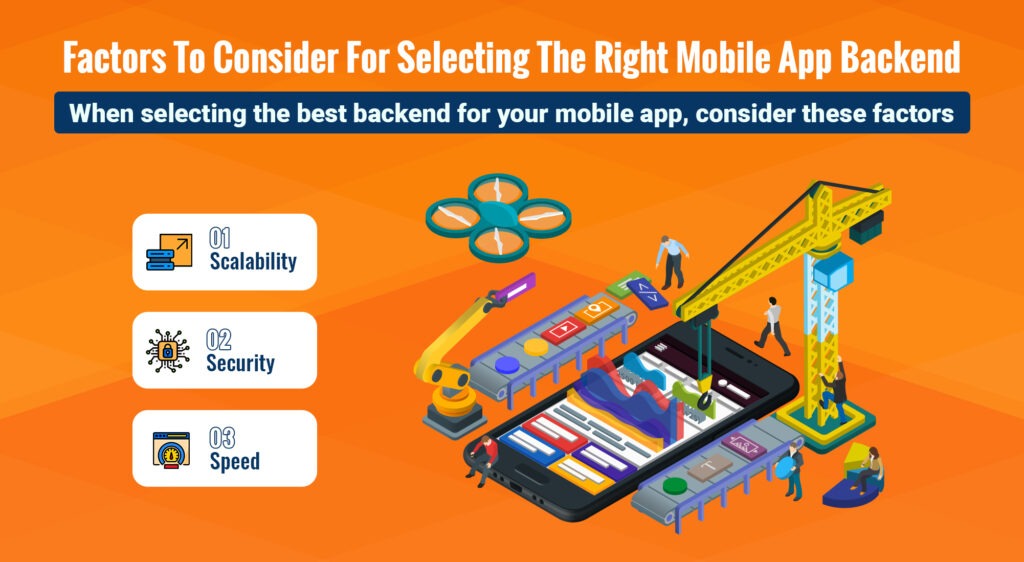
When selecting the best backend for your mobile app, consider these factors:
- Scalability: Will the backend handle growth? If you expect to scale from hundreds to thousands of users, choose a technology that can manage that increase effectively.
- Security: Strong security features are essential. With increasing cyber threats, protecting user data is vital.
- Speed: Application performance matters. A backend that processes requests quickly ensures a smooth user experience. Studies show that a one-second delay in page load time can reduce conversions by 7%.
By evaluating these technologies and considering your app’s specific needs, you can choose the best backend for your project, ensuring a successful end-to-end mobile app development process.
What is Mobile Services App?
A mobile services app on Android improves the performance of other apps on the device. These apps can manage tasks in the background, like syncing data with cloud services, handling notifications, and making API requests. For example, Google Play Services acts as a mobile service app. It provides tools for features like location tracking and user authentication.
How Mobile Services Assist in APIs, Cloud Sync, and Notifications
In APIs (Application Programming Interfaces):
Mobile services allow different apps to talk to each other. APIs help developers add features to their apps without having to create everything from scratch. For example, using a payment API allows apps to process payments safely.
In Cloud Sync:
Mobile services enable cloud synchronization, so users can access their data from different devices. This means if a user updates their information on one device, it automatically syncs to all others.
In Notifications:
Mobile services manage push notifications, keeping users informed with timely updates. They can send messages about new features, offers, or reminders directly to users. Personalized push notifications can increase app engagement by up to 400%.
By using these services, developers can enhance their app’s functionality and provide users with a smooth experience.
Key Challenges in Mobile App Backend Development
Mobile app backend development is crucial for any mobile app’s success, but developers and businesses often face challenges. Understanding these challenges can help find effective solutions.
Data Security:
Protecting user data is a major challenge in mobile app backend development. With data breaches on the rise, keeping user information safe is essential. Developers must use encryption and secure login methods to protect sensitive data. Implementing measures like HTTPS and OAuth can greatly improve security.
Performance Bottlenecks:
Performance issues can lead to a bad user experience. Slow response times or app crashes can frustrate users and make them leave. To fix this, developers should optimize their backend setup. Using content delivery networks (CDNs) and caching can significantly speed up app performance.
API Failures:
APIs are essential for connecting mobile apps with backend services. If APIs fail or are poorly designed, it can cause major problems. Regularly testing APIs and using monitoring tools can help identify and fix problems before they affect users.
How to Overcome Scalability Challenges in Growing Apps
Scalability is crucial to maintain performance and reliability. One effective strategy is to use cloud services. Cloud platforms like AWS and Google Cloud allow businesses to adjust resources as needed, ensuring the backend can handle more users without crashing.
Another approach is to adopt microservices architecture. This means breaking down the backend into smaller, independent parts. Each part can be developed, deployed, and scaled separately, improving flexibility and efficiency.
Also Read: Cloud Computing in Healthcare
Best Practices for Backend Maintenance and Monitoring
To keep a backend server for mobile apps running well, maintenance and monitoring are key. Regular updates and patches are necessary to protect against security risks. 82% of mobile apps have at least one security flaw. Automating updates can help developers stay ahead of these threats.
Monitoring tools like New Relic and Datadog can provide real-time insights into backend performance. By tracking metrics like response times and error rates, developers can quickly find and fix issues.
For entrepreneurs and product managers, understanding these challenges is important. By implementing strong security measures, optimizing performance, and ensuring scalability, businesses can create a positive user experience. Educating developers about best practices in mobile app backend development is equally vital. This improves the app’s quality and builds user trust.
Crafting Your Ideal Mobile App/Experience Starts Here!
Ready to elevate your business? Your custom app is just a click away.
Yes Let’s goWrapping it Up!
A well-built backend is crucial for mobile app success. Key parts to focus on include architecture, server, and development. A strong mobile application backend architecture helps ensure scalability, which means the app can handle more users as it grows.
Security is also vital and performance is another big factor! slow apps can lead to high abandonment rates. By paying attention to these aspects, entrepreneurs and product managers can make their apps much better.
Focus on these elements to create a reliable and enjoyable experience for users!

